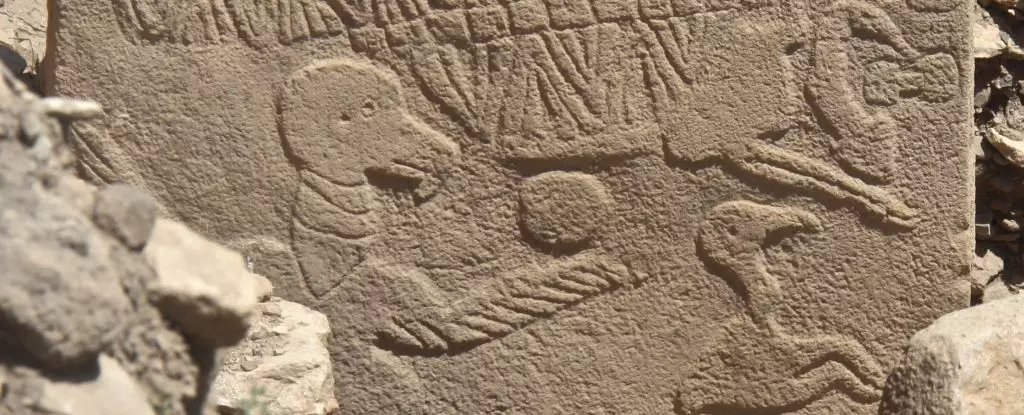The ancient monument of Göbekli Tepe in Türkiye stands out as one of the most remarkable ancient marvels in existence today. This temple complex, which served as a cultural epicenter over 10,000 years ago, is shrouded in mystery, giving us a glimpse into the lives of a long-lost civilization.
Recent discoveries have shed light on a possible function of Göbekli Tepe as an observatory, used by the Neolithic people of Türkiye to monitor the night sky. The Vulture Stone, a carved pillar within the complex, has sparked particular interest in its depiction of a bird and stylized patterns.
Chemical engineer Martin Sweatman has conducted extensive research on the carvings at Göbekli Tepe, suggesting that the V-shaped marks on the pillars could represent days, while other carvings may symbolize cosmic events. His analysis indicates that the V-shaped marks may correspond to a solar year of 365 days, consisting of 12 lunar months and 11 extra days.
Sweatman’s research also points to a correlation between the symbols on the pillars and celestial events, including the summer solstice and the Taurid meteor shower. These findings propose a sophisticated understanding of astronomy by the ancient inhabitants of Göbekli Tepe.
While Sweatman’s conclusions have faced skepticism from some archaeologists, the compelling connections he has drawn between the carvings and astronomical phenomena offer a new perspective on the purpose of Göbekli Tepe. The ongoing debate surrounding these interpretations highlights the complexity of unraveling the secrets of ancient civilizations.
The realization that Göbekli Tepe may have functioned as a primitive calendar and observatory underscores the ingenuity of our ancestors in documenting and understanding the world around them. Despite differing opinions among experts, the significance of this discovery cannot be understated in illuminating the capabilities of early societies.
As research continues and further analysis is conducted, the true nature of the carvings at Göbekli Tepe may become clearer, offering a deeper insight into the lives and beliefs of ancient peoples. The potential implications of this discovery on our understanding of early civilizations are vast, opening up new avenues for exploration and interpretation.
The revelations regarding the ancient calendar at Göbekli Tepe represent a groundbreaking development in archaeological studies. The integration of astronomy and time-keeping into the fabric of a Neolithic monument challenges conventional notions of prehistoric societies and invites us to reconsider the sophistication of our early predecessors. The enduring legacy of Göbekli Tepe as a testament to human curiosity and innovation continues to captivate and inspire researchers and enthusiasts alike.



Leave a Reply